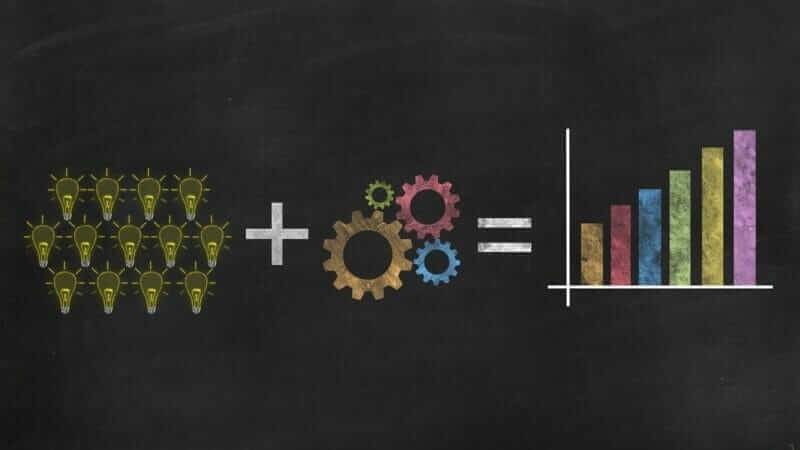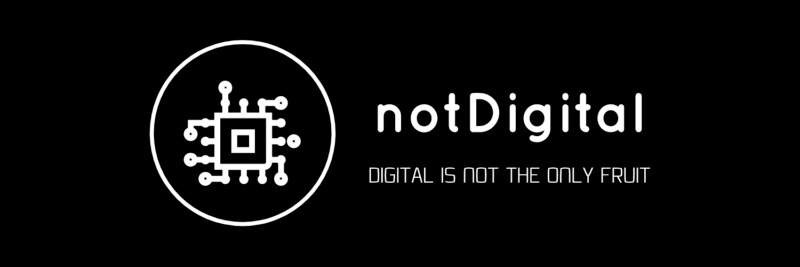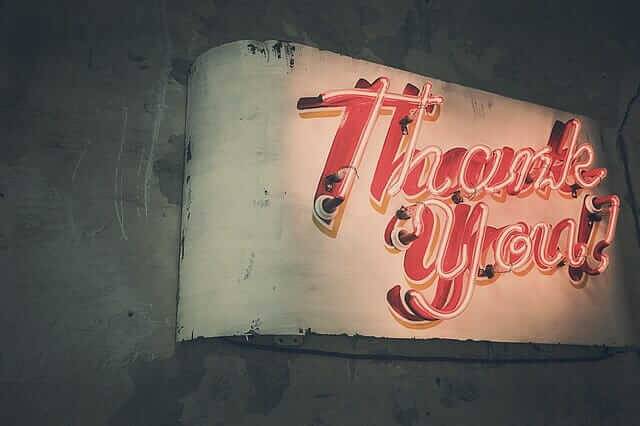Government and local government seem to be obsessed with digital. Is this a risk? Is digital the transformation tool or is there more to delivering change?

The last year has been an amazing one for us with so many highlights. I am very lucky I get to meet incredible people with the work we do and as a company and personally we are striving to continuously improve the value we add. We are constantly learning from everyone customers, not yet customers (NYCs) and partners at events and in coaching sessions. We have learned many new approaches and done new things. All of this has led us to look at our approaches and to look to improve the value we add (taken from our understanding of user needs).
Change #1 – Guest Blogs
The first critical user need we have identified is the need to deliver authentic value add content through whatever medium. We are going to changes lots of things and deliver very differently over the next year (don’t worry its about enhancing our offer not losing any value).
The guest blog is the first of them (our changes) watch this space for more. I am delighted to be able to say our first is from Tammi. A chance meeting at the excellent All Wales Continuous Improvement Community event has led to a great partnership and collaboration. Tammi is immensely qualified and insanely knowledgeable in all things improvement. Tammi also had me teach a session for her MSc students and absolutely terrifying first for me and I grew and learned from the experience. I don’t think I was terrible and a great personal learning and development experience which has led to so much more.
Lets get on with the blog.

We have been preparing notDigital for launch and following many conversations we have been looking at the dreaded D word. I posed the following question to Tammi and this is the answer. Cannot wait for her next blog on Toyota Kata which as a methodology has answered a lot of questions for me.
Here is Tammi’s response to my question:

Picture this…. You have just moved from France after 21 years, with a 17 year old cat, you arrive in your new place, and notice you have 2 letters from the TV licensing authority. You find your kettle, open the cards, feed the cat, then open the letters….
The first one outlines that from April 1st, they have noticed that no TV licence is linked to the property, the 2nd letter states that the address is now under investigation. You have just moved from a different country, and the first thing that welcomes you back to Blighty is a threatening letter, triggered by an automated process, stating that you are under investigation.

‘Changes’ a great song by the late and great David Bowie – we are changing all the time. Our processes, our teams, our connections, our environment, our technology, all changing. When it comes to gov.uk, and processes that we engage with as citizens and tax payers, some changes are DONE to us, without our participation. We don’t know things have changed until we get that letter, that triggers a response. Action, angst, anger, anxiety?

Change is here. We can have radical or incremental change. We may have well managed change, or complete chaos – Brexit comes to mind. Over the years, theory and practice has developed to enable us to manage change well. Technology and digital may be part of the solution, but cannot be used in isolation. Lets go back to basics, if we are ordering a coffee, we may be ordering for various reasons. It could be that we are thirsty, tired, hungry, emotional… it could be that we need a break, and want to catch up with friends. This is the ‘value’ of us purchasing a coffee. This will have an impact on where we go for our coffee, whether we buy it or if we make it ourselves. If we are working with the approach known as ‘Lean’ we want to understand the value that we are creating, how we create our value stream (steps for making coffee), how we create flow (no waste ie waiting, errors, transport, too many coffees), how we get the trigger for the process to start, and finally how we strive for perfection. Change should have people at the centre, should provide the services and products we need, at a cost that is fair, that is easy and error free.

People, processes and technology – the platinum triangle of change, (in Project Management we talk about the iron triangle – time, cost, scope). We need to look after our people – our beneficiaries / customers AND our colleagues. Change management – how we communicate change, project management – how we ensure we are within budget, scope and time, and leadership is important in change. Digitising processes is great, if it is the right thing to do. As a lean practitioner, I use the mnemonic SECAR – can we simplify our process, can we eliminate some steps, can we combine steps, can we automate (digitise) part of the process and can we relocate to improve the experience and process.

We can use many tools and ideas to help us with improvement. Coming back to the example of the TV license, the process has not put the customer / beneficiary the heart of it, have not checked out the reality of the situation, and have caused anxiety and anger. This is where digitisation without process improvement, customer insight and the ideas of operational excellence have been disregarded. In this series of blogs, I will outline various tools and ideas that can help with improvement in the public sector (or any sector!) In the next blog I will introduce you to KATA.[/fusion_text][fusion_text]Dr Tammi Sinha
University of Winchester: Director Centre for Climate Action & Senior Lecturer Operations and Project Management
Lean Practitioner & Lego ® Serious Play ® Trained Facilitator, LeanHE Europe Steering Group Member
Tammi’s Twitter

I absolutely love that and cannot wait for the next one. Huge thanks Tammi.
If you are interested in what our software does read the blog with a couple of demo videos
here The last year has been an amazing one for us with so many highlights. I am very lucky I get to meet incredible people with the work we do and as a company and personally we are striving to continuously improve the value we add. We are constantly learning from everyone customers, not yet customers (NYCs) and partners at events and in coaching sessions. We have learned many new approaches and done new things. All of this has led us to look at our approaches and to look to improve the value we add (taken from our understanding of user needs).
The last year has been an amazing one for us with so many highlights. I am very lucky I get to meet incredible people with the work we do and as a company and personally we are striving to continuously improve the value we add. We are constantly learning from everyone customers, not yet customers (NYCs) and partners at events and in coaching sessions. We have learned many new approaches and done new things. All of this has led us to look at our approaches and to look to improve the value we add (taken from our understanding of user needs).
 We have been preparing notDigital for launch and following many conversations we have been looking at the dreaded D word. I posed the following question to Tammi and this is the answer. Cannot wait for her next blog on Toyota Kata which as a methodology has answered a lot of questions for me.
Here is Tammi’s response to my question:
We have been preparing notDigital for launch and following many conversations we have been looking at the dreaded D word. I posed the following question to Tammi and this is the answer. Cannot wait for her next blog on Toyota Kata which as a methodology has answered a lot of questions for me.
Here is Tammi’s response to my question:
 Picture this…. You have just moved from France after 21 years, with a 17 year old cat, you arrive in your new place, and notice you have 2 letters from the TV licensing authority. You find your kettle, open the cards, feed the cat, then open the letters….
The first one outlines that from April 1st, they have noticed that no TV licence is linked to the property, the 2nd letter states that the address is now under investigation. You have just moved from a different country, and the first thing that welcomes you back to Blighty is a threatening letter, triggered by an automated process, stating that you are under investigation.
Picture this…. You have just moved from France after 21 years, with a 17 year old cat, you arrive in your new place, and notice you have 2 letters from the TV licensing authority. You find your kettle, open the cards, feed the cat, then open the letters….
The first one outlines that from April 1st, they have noticed that no TV licence is linked to the property, the 2nd letter states that the address is now under investigation. You have just moved from a different country, and the first thing that welcomes you back to Blighty is a threatening letter, triggered by an automated process, stating that you are under investigation.
 ‘Changes’ a great song by the late and great David Bowie – we are changing all the time. Our processes, our teams, our connections, our environment, our technology, all changing. When it comes to gov.uk, and processes that we engage with as citizens and tax payers, some changes are DONE to us, without our participation. We don’t know things have changed until we get that letter, that triggers a response. Action, angst, anger, anxiety?
‘Changes’ a great song by the late and great David Bowie – we are changing all the time. Our processes, our teams, our connections, our environment, our technology, all changing. When it comes to gov.uk, and processes that we engage with as citizens and tax payers, some changes are DONE to us, without our participation. We don’t know things have changed until we get that letter, that triggers a response. Action, angst, anger, anxiety?
 Change is here. We can have radical or incremental change. We may have well managed change, or complete chaos – Brexit comes to mind. Over the years, theory and practice has developed to enable us to manage change well. Technology and digital may be part of the solution, but cannot be used in isolation. Lets go back to basics, if we are ordering a coffee, we may be ordering for various reasons. It could be that we are thirsty, tired, hungry, emotional… it could be that we need a break, and want to catch up with friends. This is the ‘value’ of us purchasing a coffee. This will have an impact on where we go for our coffee, whether we buy it or if we make it ourselves. If we are working with the approach known as ‘Lean’ we want to understand the value that we are creating, how we create our value stream (steps for making coffee), how we create flow (no waste ie waiting, errors, transport, too many coffees), how we get the trigger for the process to start, and finally how we strive for perfection. Change should have people at the centre, should provide the services and products we need, at a cost that is fair, that is easy and error free.
Change is here. We can have radical or incremental change. We may have well managed change, or complete chaos – Brexit comes to mind. Over the years, theory and practice has developed to enable us to manage change well. Technology and digital may be part of the solution, but cannot be used in isolation. Lets go back to basics, if we are ordering a coffee, we may be ordering for various reasons. It could be that we are thirsty, tired, hungry, emotional… it could be that we need a break, and want to catch up with friends. This is the ‘value’ of us purchasing a coffee. This will have an impact on where we go for our coffee, whether we buy it or if we make it ourselves. If we are working with the approach known as ‘Lean’ we want to understand the value that we are creating, how we create our value stream (steps for making coffee), how we create flow (no waste ie waiting, errors, transport, too many coffees), how we get the trigger for the process to start, and finally how we strive for perfection. Change should have people at the centre, should provide the services and products we need, at a cost that is fair, that is easy and error free.
 People, processes and technology – the platinum triangle of change, (in Project Management we talk about the iron triangle – time, cost, scope). We need to look after our people – our beneficiaries / customers AND our colleagues. Change management – how we communicate change, project management – how we ensure we are within budget, scope and time, and leadership is important in change. Digitising processes is great, if it is the right thing to do. As a lean practitioner, I use the mnemonic SECAR – can we simplify our process, can we eliminate some steps, can we combine steps, can we automate (digitise) part of the process and can we relocate to improve the experience and process.
People, processes and technology – the platinum triangle of change, (in Project Management we talk about the iron triangle – time, cost, scope). We need to look after our people – our beneficiaries / customers AND our colleagues. Change management – how we communicate change, project management – how we ensure we are within budget, scope and time, and leadership is important in change. Digitising processes is great, if it is the right thing to do. As a lean practitioner, I use the mnemonic SECAR – can we simplify our process, can we eliminate some steps, can we combine steps, can we automate (digitise) part of the process and can we relocate to improve the experience and process.
 We can use many tools and ideas to help us with improvement. Coming back to the example of the TV license, the process has not put the customer / beneficiary the heart of it, have not checked out the reality of the situation, and have caused anxiety and anger. This is where digitisation without process improvement, customer insight and the ideas of operational excellence have been disregarded. In this series of blogs, I will outline various tools and ideas that can help with improvement in the public sector (or any sector!) In the next blog I will introduce you to KATA.[/fusion_text][fusion_text]Dr Tammi Sinha
University of Winchester: Director Centre for Climate Action & Senior Lecturer Operations and Project Management
Lean Practitioner & Lego ® Serious Play ® Trained Facilitator, LeanHE Europe Steering Group Member
Tammi’s Twitter
We can use many tools and ideas to help us with improvement. Coming back to the example of the TV license, the process has not put the customer / beneficiary the heart of it, have not checked out the reality of the situation, and have caused anxiety and anger. This is where digitisation without process improvement, customer insight and the ideas of operational excellence have been disregarded. In this series of blogs, I will outline various tools and ideas that can help with improvement in the public sector (or any sector!) In the next blog I will introduce you to KATA.[/fusion_text][fusion_text]Dr Tammi Sinha
University of Winchester: Director Centre for Climate Action & Senior Lecturer Operations and Project Management
Lean Practitioner & Lego ® Serious Play ® Trained Facilitator, LeanHE Europe Steering Group Member
Tammi’s Twitter
 I absolutely love that and cannot wait for the next one. Huge thanks Tammi.
If you are interested in what our software does read the blog with a couple of demo videos here
I absolutely love that and cannot wait for the next one. Huge thanks Tammi.
If you are interested in what our software does read the blog with a couple of demo videos here